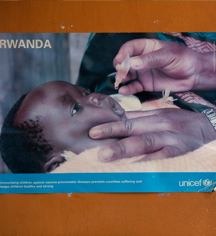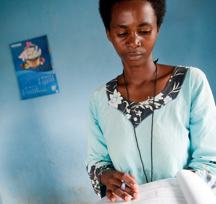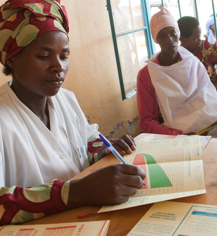Under-five mortality reduction in Rwanda
From 2000 to 2015, Rwanda reduced its under-five mortality (U5M) rate by 67 percent.
CONTENTS
Quick Downloads

KEY INSIGHTS
Rwanda consistently promoted and supported policies and expenditures to strengthen the overall primary care system—instead of the disease-specific interventions often favored by donors and foreign partners.
The government invested heavily in building institutional capacities to generate and interpret data and other forms of empirical evidence. To maximize accountability, the national government devolved implementation to the district and local levels, allowing straightforward evaluations of high-performance and low-performance jurisdictions, facilities, and interventions.
Commitment to “horizontal” health system improvements
A crucial element of Rwanda’s progress against U5M was its consistent preference for policies and expenditures that would strengthen the overall primary care system—instead of vertical, disease-specific interventions often favored by donors and foreign partners.
The government held fast to a system-wide, “horizontal” vision of primary-care improvement, placing a priority on such fundamentals as clinic construction; personnel training and retention; high-quality data systems; and vaccination delivery infrastructure.
An emphasis on primary care generally—and U5M specifically—was evident in the government’s Vision 2020 document, which was released in 2000. In time, the government’s focus on primary care would yield immense dividends, including the reduction of U5M. For example, Rwanda’s implementation of the pneumococcal conjugate vaccine was also designed to strengthen future vaccination campaigns.

Government-led donor/NGO coordination
Rwanda insisted that donors and non-governmental organizations (NGOs) align their actions and expenditures with the country’s vision of a strong, unified and national health system.

While maintaining control over its own health policies, Rwanda skillfully drew upon its donor and partner relationships to ensure that those policies incorporated expertise from respected outside sources. Even as the national government held its donors close, it took unambiguous steps to make sure everyone understood who wielded ultimate authority. When well-meaning donors earmarked money for disease-specific “vertical” interventions, Rwanda sought wherever possible to steer those funds toward uses that were consistent with broader systemic improvements.
Even during the fragile first decade following the genocide, when much donor funding for health care was earmarked for disease-specific projects, the nascent government strove to ensure that resources were used to build and strengthen primary health care systems.
Strong community-based health services
By investing in its community health worker (CHW) program—and in the construction and renovation of health facilities in remote rural areas—the national government developed the human and infrastructural resources needed to serve its population and gather necessary data.
Rwanda inaugurated a community health worker (CHW) program in 1995 to compensate for a severe shortage of health care workers; the nation now has 45,000 CHWs working across 15,000 villages. CHWs are responsible for general health interventions for the entire community, including for children under five. CHWs are trained in a cascading, train-the-trainer model on their assigned community-health activities, which have varied over time. By 2007, CHWs nationwide had undergone training at their local health centers on home-based management of fever.

Emphasis on data and evidence
The government invested heavily in building institutional capacities to generate and interpret data and other forms of empirical evidence.

This strong data culture is sustained through performance-based financing and performance contracts, with negative consequences for low-quality or limited collections of data. Rwanda used its strong accountability and data culture to create financial incentives for high performance, a policy that generated meaningful health gains when used judiciously. The culture of data was also reflected in the adaptation of evidence-based interventions before and during implementation, and a willingness to incorporate new evidence from the global community.
Decentralization of authority and responsibility
To maximize accountability, the national government devolved implementation capacity and responsibility to the district and local levels.
This commitment to decentralization allowed straightforward evaluations of high-performance and low-performance jurisdictions, facilities, and interventions. The emphasis on local accountability has been accompanied by a commensurate expansion of local implementation authority. The national Ministry of Health (MOH) sets national policy, gathers and evaluates data, and provides overall supervision. The districts and localities carry out Kigali’s directives more or less as they see fit.


Under-five mortality reduction in Rwanda

Ask an Expert
Our team and partners are available to answer questions that clarify our research, insights, methodology, and conclusions.
